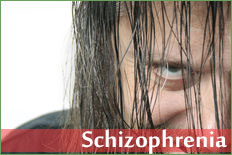Health Centers > Mental Health Center > Mental Disorders > Personality Disorders > Avoidant Personality Disorder > Causes, Frequency, Siblings and Mortality - Morbidity
Avoidant Personality Disorder Causes, Frequency, Siblings and Mortality - Morbidity
Causes
- The exact cause of APD is unknown.
- The disorder may be related to temperamental factors that are inherited. Specifically, various anxiety disorders in childhood and adolescence have been associated with a temperament characterized by behavioral inhibition, including features of being shy, fearful, and withdrawn in new situations. Components of this temperament have been identified in infants as young as 4 months.
- Genetic factors have been hypothesized to cause APD and social phobia because both conditions are found more frequently in certain families. The exact mechanism of transmission is unknown, and phenotypic expression of any underlying genetic vulnerability may include other anxiety disorders.
- Although not specifically studied in cases of APD, traumatic experiences, parental overprotection, poor social skills, and parental anxiety have been found to be related to social anxiety.
- Retrospective studies of adults with APD report high levels of childhood emotional abuse (61%). Physical abuse, however, may be more closely linked with a diagnosis of another personality disorder or PTSD.
- A multifactorial model of causation is likely, with several of the above factors exerting variable influence in individual cases.
From an evolutionary point of view, the "fight-or-flight" dichotomy suggests that both hostility & avoidance are naturally occurring responses to fear. Both are thought to be based on anxiety evoked by the presence of a feared stimulus object or situation. However, avoidance can co-vary with fear, vary inversely or vary independently (Rachman & Hodgson, 1974). Therefore, avoidance behavior seems to be more complex than is accountable for by the simple presence of fear or anxiety. What appear to be purposeful hostile reactions to others, for example, may be indicative of highly complex psychological processes.
Avoidant Personality Disorder
- Introduction
- Epidemiology and Phenomenology
- Causes
- Diagnostic Guidelines
- ICD-10 Criteria
- Diagnostic criteria (DSM-IV-TR)
- Differential Diagnosis
- Frequency
- Siblings
- Mortality / Morbidity
- Complications
- Prognosis
- Associated Features
- Relationships
- Employment
- Memory
- Historical Developments
- Review of Empirical Literature Studies
- Treatment Recommendations
- L Cognitive and Behavior Therapies
- L Psychodynamic Therapy
- L Interpersonal Therapy
- L Psychopharmacological Treatment
- L Group Therapy
- L Family Therapy
- L Medications
- Conclusions
- References
It is commonly believed that biological factors, including heredity & prenatal maternal factors, set the foundation for personality & personality disorders, while environmental factors shape the form of their expression (Millon & Everly). In the case of avoidant personality disorder, the evidence of major biogenic influences in its etiology & development is speculative & weak (Millon & Everly). However, there is some evidence that a timid temperament in infancy may predispose individuals to developing APD later in life (Kaplan & Sadock, 1991). While shyness appears to indicate underactivity, Kagan believes that this inherited tendency to be shy is actually the result of overstimulation or an excess of incoming information. Timid individuals cannot cope with the excess of information & so withdraw from the situation as a self-protective measure. The inability to cope with this information overload may be due to a low autonomic arousal threshold (Venebles, 1968). The same mechanism may also be responsible for the avoidant's hypervigilence. However, it is generally believed that these biological substrates exist within the avoidant personality as a biological foundation for the emergence of the disorder itself & that full development of APD is likely due to significant environmental influences (Millon & Everly).
Schizophrenia
A common and serious mental disorder characterized by loss of contact with reality (psychosis), hallucinations (false perceptions), delusions (false beliefs), abnormal thinking
As the individual gets older there are fewer mandatory (like school) activities that will force them to engage in the world. Their social connectedness can become more and more limited. Their avoidance behaviors can have severe consequences on their social and occupational functioning.
Frequency
- In the US: The frequency of APD in children is not known because current psychiatric practice is to avoid labeling children and adolescents with personality disorders and to describe their traits instead. However, in the adult general population, the prevalence is estimated to be 2.1-2.6%.
- Internationally: The international frequency has not been studied in children.
- Sex: APD is estimated to be equally common in males and females.
Diagnosis
Many individuals experience avoidant personality characteristics at one point or another in their lives. The occasional feelings of self-doubt and fear in new and unfamiliar social or personal relationships is not unusual, nor is it unhealthy, as these situations may cause feelings of inadequacy and social avoidance in even the most self-confident individuals. Avoidant personality traits only emerge as a disorder when they begin to have a long-term, negative impact on the individual, cause functional impairment by significantly altering lifestyle and impacting quality of life, and trigger feelings of distress for the individual.
The Diagnostic and Statistical Manual of Mental Disorders, Fourth Edition (DSM-IV), the standard diagnostic reference for mental health professionals in the United States, states that at least four of the following criteria (or symptoms) must be present in an individual for a diagnosis of avoidant personality disorder:
- The avoidance of occupational or school activities that involve significant interpersonal contact due to an unreasonable or excessive fear of rejection or criticism.
- An unwillingness to enter into an interpersonal relationship unless there are assurances of acceptance.
- Restraint in interpersonal situations because of an unreasonable fear of being ridiculed.
- Preoccupation with criticism and the possibility of rejection in social situations.
- Inhibition with others in interpersonal relationships due to feelings of inadequacy.
- Self-perception of social inadequacy and inferiority to others.
- Reluctance to participate in new activities or take any personal risks because of a perceived risk of embarrassment.
Avoidant personality disorder can occur in conjunction with other social phobias, mood and anxiety disorders, and personality disorders. Diagnosis may be complicated by the fact that avoidant personality disorder can either be the cause or result of other mood and anxiety disorders. For example, individuals who suffer from major depressive disorder may begin to withdraw from social situations and experience feelings of worthlessness, symptoms that are also prominent features of avoidant personality disorder. On the other hand, the insecurity and isolation that are symptoms of avoidant personality disorder can naturally trigger feelings of depression.
Associated features may include hypersensitivity to rejection and criticism.
Siblings
The order in which children are born within the family structure has a profound influence on their personality development. That is to say, the parents' expectations and treatment of the oldest child cannot be identical with that of the youngest one and so forth. The conclusion is that each child experiences a different environment within the same family.
Accompanying the obvious physical distinctions between male and female there is a complex biochemical system which not only distinguishes between the sexes in function, but also creates emotional differences which are further differentiated by the roles and expectations of the society in which they live.
Because of its gender and the fact that it necessarily views the environment from a different level of maturation, each child in a family will develop a distinctly individual personality.
Mortality / Morbidity
The most common syndromes seen with APD include agoraphobia, social phobia (some clinicians see APD as possibly a generalized form of social phobia), generalized anxiety disorder, dysthymia (an emotion of depression), major depressive disorder (the syndrome with all the associated signs and symptoms), hypochondriasis, conversion disorder, dissociative disorder, and schizophrenia.
- School refusal and poor performance: As many as one third of children who refuse to go to school may have significant social anxiety.
- Conduct problems and oppositional behavior: Many children with severe social anxiety refuse to participate in social activities and may have behavioral outbursts or panic attacks when placed in a social situation.
- Poor peer relations: Patients with APD often have few friends and refuse social overtures as children, behavior patterns that persist through adolescence and adulthood.
- Lack of involvement in social and nonsocial activities: Patients with APD demonstrate lower levels of participation in athletics, extracurricular activities, and hobbies than children with depression or other personality disorders.
Some Facts on Avoidant Personality Disorder
Avoidant Personality Disorder (AVPD) is a serious condition characterised by a pattern of withdrawal, self-loathing and heightened sensitivity to criticism. According to DSM IV, people who suffer from AVPD display many of the following traits (Note: These must greatly interfere with the individual's everyday life):
- Avoids occupational activities that involve significant interpersonal contact, because of fears of criticism, disapproval, or rejection.
- Is unwilling to get involved with people unless certain of being liked.
- Shows restraint initiating intimate relationships because of the fear of being ashamed, ridiculed, or rejected due to severe low self-worth.
- Is preoccupied with being criticized or rejected in social situations.
- Is inhibited in new interpersonal situations because of feelings of inadequacy.
- Views self as socially inept, personally unappealing, or inferior to others
- Is unusually reluctant to take personal risks or to engage in any new activities because they may prove embarrassing.
Treatment: Sometimes symptoms can be reduced by taking SSRI antidepressants. Therapy programs typically involve social skills training, cognitive behavioral therapy and group therapy. Getting help with their sensitivity to criticism, their intense fear of rejection, and their social fears is a central part of therapy.
References


